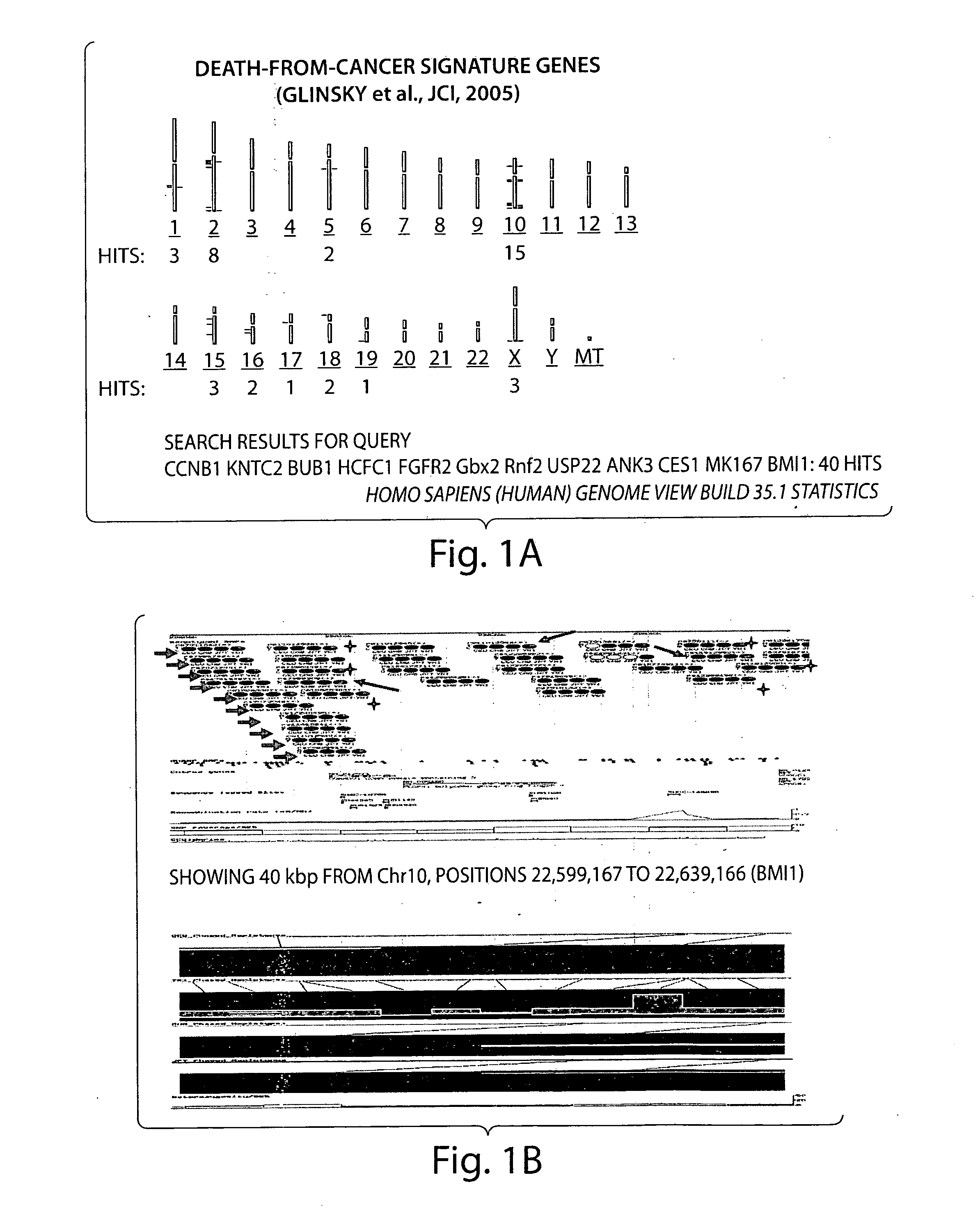Treatments of therapy resistant diseases and drug combinations for treating the same
- Summary
- Abstract
- Description
- Claims
- Application Information
AI Technical Summary
Benefits of technology
Problems solved by technology
Method used
Image
Examples
example 1
Preparation of Clinical Samples
[0281]Two clinical outcome sets comprising 21 (outcome set 1) and 79 (outcome set 2) samples were utilized for analysis of the association of the therapy outcome with expression levels of the BMI1 and Ezh2 genes and other clinico-pathological parameters. Expression profiling data of primary tumor samples obtained from 1243 microarray analyses of eight independent therapy outcome cohorts of cancer patients diagnosed with four types of human cancer were analyzed in this study. Microarray analysis and associated clinical information for clinical samples analyzed in this work were previously published and are publicly available.
[0282]Prostate tumor tissues comprising clinical outcome data set were obtained from 79 prostate cancer patients undergoing therapeutic or diagnostic procedures performed as part of routine clinical management at the Memorial Sloan-Kettering Cancer Center (MSKCC). Clinical and pathological features of 79 prostate cancer cases compri...
example 2
Cell Culture
[0284]Cell lines used in this study were previously described in Glinsky et al., Cancer Lett., 201: 67-77 (2003). The LNCap- and PC-3-derived cell lines were developed by consecutive serial orthotopic implantation, either from metastases to the lymph node (for the LN series), or reimplanted from the prostate (Pro series). This procedure generated cell variants with differing tumorigenicity, frequency and latency of regional lymph node metastasis. Except where noted, cell lines were grown in RPMI1640 supplemented with 10% FBS and gentamycin (Gibco BRL) to 70-80% confluence and subjected to serum starvation as described, or maintained in fresh complete media, supplemented with 10% FBS. Growth inhibitory experiments were carried out in the 96-well format based on Hoechst staining for the estimate of live cell counts using high-through put robotics of the Target and Drug Discovery Facility (TDDF) of the Ordway Research Institute Cancer Center. Chemicals, reagents, and drugs ...
example 3
Anoikis Assay
[0285]Cells were harvested by 5-min digestion with 0.25% trypsin / 0.02% EDTA (Irvine Scientific, Santa Ana, Calif., USA), washed and resuspended in serum free medium. Cells at concentration 1.7×105 cells / well in 1 ml of serum free medium were plated in 24-well ultra low attachment polystyrene plates (Corning Inc., Corning, N.Y., USA) and incubated at 37° C. and 5% CO2 overnight. Viability of cell cultures subjected to anoikis assays were >95% in Trypan blue dye exclusion test.
PUM
| Property | Measurement | Unit |
|---|---|---|
| Volume | aaaaa | aaaaa |
| Fraction | aaaaa | aaaaa |
| Fraction | aaaaa | aaaaa |
Abstract
Description
Claims
Application Information
 Login to View More
Login to View More - R&D
- Intellectual Property
- Life Sciences
- Materials
- Tech Scout
- Unparalleled Data Quality
- Higher Quality Content
- 60% Fewer Hallucinations
Browse by: Latest US Patents, China's latest patents, Technical Efficacy Thesaurus, Application Domain, Technology Topic, Popular Technical Reports.
© 2025 PatSnap. All rights reserved.Legal|Privacy policy|Modern Slavery Act Transparency Statement|Sitemap|About US| Contact US: help@patsnap.com



